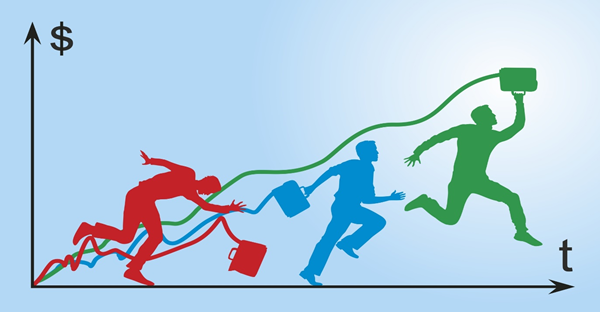A zero beta portfolio is a basket of investments that have zero correlation with the market. As beta indicates systematic risks, a zero-beta portfolio has nil systematic risks. Since there is no correlation to the market, it is more like a risk-free portfolio. Due to this, the rate of return on a zero-beta portfolio is low. As a result, zero beta portfolios are often popular when investors seek low risks during bearish market phases.
Summary
- A zero-beta portfolio has zero correlation with the market fluctuations.
- The portfolio's value does not fluctuate much as it eliminates systematic risks.
- To get a zero-beta portfolio, investors can use various investment products like commodities, real estate, and sometimes even future contracts.
Frequently Asked Questions (FAQ)
How does a zero-beta portfolio function?
A zero-beta portfolio's investments are chosen to ensure that there are no market-related swings. As a result, the portfolio's value does not fluctuate according to market trends. These investments eliminate systematic risks.
Beta is the indicator of market dependence. It shows the level of correlation a portfolio has to the market. If the beta value is more than one, it indicates that investments are more volatile than the market. However, a lower beta value shows that the investments are less volatile as compared to the market. A zero beta, therefore, means nil correlation with the market.
A weighted sum of the various asset betas together determines the beta of a portfolio. In theory, investors can create a zero-beta portfolio by taking multiple unrelated individual assets. For example, various substitute investment products like commodities, real estate, and sometimes even future contracts are a part of a zero-beta portfolio. Often such a model is used by hedge fund managers.

Source: © Akvdanil | Megapixl.com
What are the features of a zero-beta portfolio?
Features of a zero portfolio are –
- Any fluctuations in the stock market do not affect the value of a zero-beta portfolio.
- Only reduce systematic risk, not helpful to minimise the individual asset risks or unsystematic risks.
- Variance in zero-beta portfolios is often minimum.
- Often investors hold both a market portfolio as well as a zero-beta portfolio.
- It is the preferred choice of investors during bearish phases.
- A zero-beta portfolio has lower risk and lower returns.
Why is Zero-beta portfolio created?
A Zero-beta portfolio is a unique strategy designed generally to produce long-term capital appreciation. If investments are under active management, it is achievable. Securities then can be chosen in a way to typically reach correlation to the general equity market. It provides the option of diversification while reducing volatility linked to market fluctuations.

Source: © Jirsak | Megapixl.com
Example-
Let us consider an investor Richmond. Richmond has funds available with himself and does not know what to do. He fears the share market due to the inherent fluctuations. He has seen a friend losing a lot of wealth during bearish phases of the market. Brainy, another friend of Richmond, a portfolio manager by profession, meets Richmond one day. Brainy gets to know about Richmond's dilemma. He suggests the construction of a zero-beta portfolio for Richmond's investments.
Now Richmond explores and learns with the help of Brainy about a Zero-beta portfolio. He then puts his funds into a portfolio which looks like this-
Stock A- having beta -0.85
Stock B- having beta -0.45
Bond X- having beta -0.85
Bond Y- having beta -0.45
In this way, Richmond eliminates the overall portfolio risks. Even during bearish phases, the bonds having a negative beta would give him returns. Richmond only needs to keep reviewing asset betas regularly and shift funds accordingly in his portfolio.
Richmond can diversify his portfolio further by using ETFs, mutual funds, or even commodities like gold and iron instead of bonds and stocks. Unfortunately, few investors or portfolio managers may also use futures contracts to make portfolio beta nil.
How is a zero-beta portfolio shown as a graph?
Usually, a portfolio or an asset is represented graphically using the security market line (SML). SML represents the Capital Asset Pricing Model (CAPM). It gives the expected return from an asset or portfolio at different levels of market risks. Market risks are called systematic risks.
SML thus becomes a 'characteristic line' on a two-dimensional axis graph, where the x-axis shows the beta or the risk of the assets, and the y-axis shows the expected return from the asset or portfolio.
The Security Market Line (SML) is drawn from values of expected return. The expected return of a portfolio comes from returns of individual assets contained in the portfolio. Expected returns are a sum of the risk-free rate and the value obtained by multiplying beta with the market returns over and above the risk-free rate, expressed in an equation as:
Rf + βi [E(RM) – Rf]
Where Rf is the risk-free rate, Bi is the beta of asset, and E(RM) is the expected market return.
Now, if the Beta value is zero, the expected return will be the risk-free rate. In a zero-beta portfolio expected return on the portfolio is equal to the risk-free rate.
The most critical input of SML is thus the beta coefficient and predicting it is essential. Moreover, maintaining a zero-beta portfolio essentially needs the active management of the beta values of individual assets.
 Please wait processing your request...
Please wait processing your request...